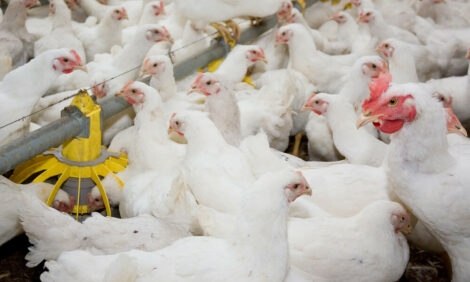



CME: US Meat Exports Facing Significant Headwinds
US - US meat exports are facing significant headwinds at this time, be this due to the sharp increase in the value of the US dollar, lower prices for competing meats in other countries and the slowdown strike in West Coast ports, write Steve Meyer and Len Steiner.And then there is always the risk of markets closing their doors due to disease outbreaks.
Canada announced yesterday that it had found another case of BSE, which prompted South Korea to close its doors. But the impact from that will be minimal. South Korea does not purchase much beef from Canada and it is unlikely that the Canadian case will affect current US exports to the South Korean market.
But the case does highlight that should we find a case of BSE in the US, it could in the short term cause some markets to close their doors. It is a risk. Then there is the spread of avian flu in the US West Coast. There have been cases of the highly pathogenic H5N8 avian influenza in Washington State and California. Some countries have imposed limited export bans but China is the only major importer to impose a complete ban on US poultry shipments. But it remains to be seen how other countries respond now that a second case of bird flu is found in a California, especially since this time it was found in a commercial operation.
Most US poultry production is located in the South and Southeastern part of the US and there have been no indications of cases of bird flu there. Still, there is a risk that if the disease spreads in other states, we could see a more forceful reaction from our trading partners. Mexico in the past has blocked US poultry shipments due to bird flu concerns and Mexico today is a much more important market than it was 10 years ago.
Back then (2005), Mexico accounted for about 10 per cent of US chicken exports. Last year, Mexico represented 21 per cent of all US chicken exports and, at 154 million pounds (CWE), it also represented about 2.7 per cent of all US chicken production. This is a very important market for US chicken and it bears watching how they respond to the new cases of avian flu cropping up. Poultry supplies are expanding globally and a strong US dollar also is working against our exports.
Some countries may find this an opportune time to ban US shipments and use the outbreak of avian influenza as an excuse. And we need all the exports we can get considering the supply of chicken coming to market today and expectations for higher production in the spring and summer.
We estimate that combined beef, pork, chicken and turkey production for the week ending February 14 was 1.760 billion pounds, 127 million pounds (+7.8 per cent) more than a year ago.
Since the beginning of the year, red meat and poultry production has averaged 4.6 per cent more than the same period a year ago. Broiler production last week was about 79 million pounds larger than a year ago, accounting for 62 per cent of the increase in meat output. The growth in chicken production is partly due to more chickens coming to market but also due to much heavier birds.
Producer margins last year were excellent and lower feed costs remain supportive of chicken expansion. The broiler hatching flock as of February 1 was about 1.1 per cent larger than the previous year but the number of eggs set in incubators currently is running about 3.3 per cent above last year.
In its latest WASDE forecast USDA pegged total US chicken production for 2015 at 39.5 billion pounds, 3.6 per cent higher than a year ago. This would imply a slaughter increase of 2.2-2.5 per cent, maybe a bit on the conservative side, especially if producers are able to fix the hatchability issues that plagued the industry last year.
The latest WASDE forecasts a 2.5 per cent reduction in chicken exports in 2015. More cases of flu and unwarranted trade bans could further challenge the export outlook in 2015.









